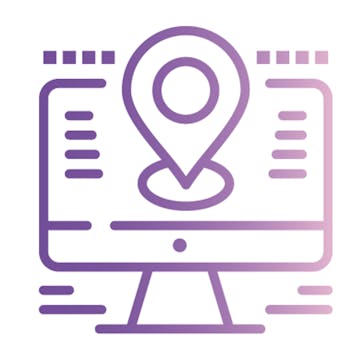
Пространственный анализ — направление в современной географической науке, соединяющее компьютерное моделирование в геоинформационных системах (ГИС) с математической статистикой. В курсе методы пространственного анализа раскрываются на примере исследовательских задач социально-гуманитарных дисциплин. Для этого используются пакеты QGIS и GeoDa, а также язык программирования R. Данное сочетание позволяет вывести политическую и социально-экономическую географию на новый аналитический уровень обобщений. Курс разработан таким образом, что позволяет освоить техники пространственного анализа исследователям без специальных навыков работы с...
Read more
Good to know
Save this course
Activities
Review previous coursework for earlier courses in GIS or statistics
Show steps
Reviews the basic concepts in earlier coursework, helping you prepare for more advanced topics that are covered later in this course.
Browse courses on
R Programming
Show steps
-
Gather materials from previous courses
-
Work through old assignments
-
Practice using the GIS and statistics software
Participate in study groups or online forums to discuss course material
Show steps
Encourages collaboration and knowledge sharing with peers, allowing you to clarify concepts, ask questions and provide support to each other.
Show steps
-
Join study groups or connect with classmates
-
Prepare questions and discussion points
-
Actively participate in discussions
Follow tutorials on spatial analysis techniques and methods
Show steps
Provides a deeper dive into the skills you are learning, enhancing your understanding of spatial analysis methods and techniques.
Show steps
-
Identify relevant tutorials
-
Follow the instructions carefully
-
Experiment with the techniques and methods
Three other activities
Expand to see all activities and additional details
Show all six activities
Practice QGIS and GeoDa tutorials
Show steps
Reinforce your understanding of QGIS and GeoDa by completing tutorials and exercises.
Browse courses on
QGIS
Show steps
-
Find online tutorials for QGIS and GeoDa.
-
Follow the tutorials and complete the exercises.
-
Apply the skills you learn to your own research projects.
Develop a research project that applies the spatial analysis techniques learned in this course
Show steps
Provides a comprehensive and challenging opportunity to apply the skills and knowledge gained in the course to a real-world problem or research question.
Show steps
-
Define the research question or problem
-
Gather and prepare data
-
Apply spatial analysis techniques
-
Analyze results and draw conclusions
-
Communicate findings
Create a spatial data visualization
Show steps
Develop your analytical and communication skills by creating a visual representation of spatial data.
Browse courses on
Spatial Data Visualization
Show steps
-
Choose a dataset and a research question.
-
Use QGIS or another GIS software to create a map or chart.
-
Interpret the results and draw conclusions.
-
Communicate your findings in a written report or presentation.
Review previous coursework for earlier courses in GIS or statistics
Show steps
Reviews the basic concepts in earlier coursework, helping you prepare for more advanced topics that are covered later in this course.
Browse courses on
R Programming
Show steps
- Gather materials from previous courses
- Work through old assignments
- Practice using the GIS and statistics software
Participate in study groups or online forums to discuss course material
Show steps
Encourages collaboration and knowledge sharing with peers, allowing you to clarify concepts, ask questions and provide support to each other.
Show steps
- Join study groups or connect with classmates
- Prepare questions and discussion points
- Actively participate in discussions
Follow tutorials on spatial analysis techniques and methods
Show steps
Provides a deeper dive into the skills you are learning, enhancing your understanding of spatial analysis methods and techniques.
Show steps
- Identify relevant tutorials
- Follow the instructions carefully
- Experiment with the techniques and methods
Practice QGIS and GeoDa tutorials
Show steps
Reinforce your understanding of QGIS and GeoDa by completing tutorials and exercises.
Browse courses on
QGIS
Show steps
- Find online tutorials for QGIS and GeoDa.
- Follow the tutorials and complete the exercises.
- Apply the skills you learn to your own research projects.
Develop a research project that applies the spatial analysis techniques learned in this course
Show steps
Provides a comprehensive and challenging opportunity to apply the skills and knowledge gained in the course to a real-world problem or research question.
Show steps
- Define the research question or problem
- Gather and prepare data
- Apply spatial analysis techniques
- Analyze results and draw conclusions
- Communicate findings
Create a spatial data visualization
Show steps
Develop your analytical and communication skills by creating a visual representation of spatial data.
Browse courses on
Spatial Data Visualization
Show steps
- Choose a dataset and a research question.
- Use QGIS or another GIS software to create a map or chart.
- Interpret the results and draw conclusions.
- Communicate your findings in a written report or presentation.
Career center
Spatial Data Scientist
GIS Analyst
Geographer
Remote Sensing Analyst
Economist
Demographer
Political Scientist
Public Health Analyst
Market Researcher
Transportation Planner
Urban Planner
Epidemiologist
Operations Research Analyst
Cartographer
Survey Researcher
Reading list
Share
Similar courses
OpenCourser helps millions of learners each year. People visit us to learn workspace skills, ace their exams, and nurture their curiosity.
Our extensive catalog contains over 50,000 courses and twice as many books. Browse by search, by topic, or even by career interests. We'll match you to the right resources quickly.
Find this site helpful? Tell a friend about us.
We're supported by our community of learners. When you purchase or subscribe to courses and programs or purchase books, we may earn a commission from our partners.
Your purchases help us maintain our catalog and keep our servers humming without ads.
Thank you for supporting OpenCourser.


